
Equatorial Guinea, officially the Republic of Equatorial Guinea, is a country on the west coast of Central Africa, with an area of 28,000 square kilometres (11,000 sq mi). Formerly the colony of Spanish Guinea, its post-independence name refers to its location near both the Equator and in the African region of Guinea. As of 2021, the country had a population of 1,468,777, over 85% of whom are members of the Fang people, the country's dominant ethnic group. The Bubi people, indigenous to Bioko, are the second largest group at approximately 6.5% of the population.

Spanish or Castilian (castellano) is a Romance language of the Indo-European language family that evolved from the Vulgar Latin spoken on the Iberian Peninsula of Europe. Today, it is a global language with about 500 million native speakers, mainly in the Americas and Spain, and about 600 million when including second language speakers. Spanish is the official language of 20 countries, as well as one of the six official languages of the United Nations. Spanish is the world's second-most spoken native language after Mandarin Chinese; the world's fourth-most spoken language overall after English, Mandarin Chinese, and Hindustani (Hindi-Urdu); and the world's most widely spoken Romance language. The country with the largest population of native speakers is Mexico.
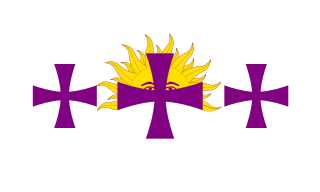
The term Hispanic refers to people, cultures, or countries related to Spain, the Spanish language, or Hispanidad broadly. In some contexts, especially within the United States, "Hispanic" is used as an ethnic or meta-ethnic term.
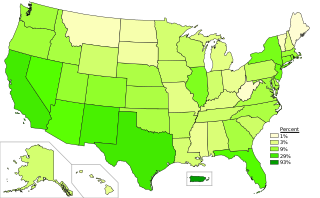
Spanish is the second most spoken language in the United States. Over 42 million people aged five or older speak Spanish at home. Spanish is also the most learned language other than English, with about 8 million students. Estimates count up to 57 million native speakers, heritage language speakers, and second-language speakers. There is an Academy of the Spanish Language located in the United States as well.

The French West Indies or French Antilles are the parts of France located in the Antilles islands of the Caribbean:

Ibero-America or Iberian America is generally considered to be the region in the Americas comprising countries or territories where Spanish or Portuguese are predominant languages. Portugal and Spain are themselves sometimes included in some Ibero-American diplomatic circles, such as the Ibero-American Summit and the Organization of Ibero-American States. The Organization of Ibero-American States also includes Spanish-speaking Equatorial Guinea, in Central Africa, but not the Portuguese-speaking African countries. The Latin Recording Academy, the organization responsible for the Latin Grammy Awards, also includes Spain and Portugal as well as the Latino population of Canada and the United States in their definition of Ibero-America.

Anglo-America most often refers to a region in the Americas in which English is the main language and British culture and the British Empire have had significant historical, ethnic, linguistic, and cultural impact. This includes the United States, most of Canada, and some Caribbean countries. Anglo-America is distinct from Latin America, a region of the Americas where Romance languages are prevalent. The adjective is commonly used, for instance, in the phrase "Anglo-American law", a concept roughly coterminous with Common Law.
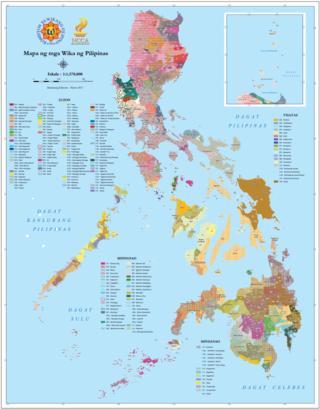
There are some 130 to 195 languages spoken in the Philippines, depending on the method of classification. Almost all are Malayo-Polynesian languages native to the archipelago. A number of Spanish-influenced creole varieties generally called Chavacano along with some local varieties of Chinese are also spoken in certain communities. The 1987 constitution designates Filipino, a standardized version of Tagalog, as the national language and an official language along with English. Filipino is regulated by Commission on the Filipino Language and serves as a lingua franca used by Filipinos of various ethnolinguistic backgrounds.

The Basque Country is the name given to the home of the Basque people. The Basque Country is located in the western Pyrenees, straddling the border between France and Spain on the coast of the Bay of Biscay.

Hispanophone refers to anything related to the Spanish language.

Culture of Nicaragua is a fusion of Mesoamerican and Chibcha influences. The western part was colonized by the Spanish and its culture is similar to western El Salvador in that western Nicaragua was dominated by the Nahua people, specifically the Nicarao, a branch of the Pipil people. Nahua heritage can still be seen in Nicaraguan culture especially in its cuisines, the etymologies of many of its place names, and even DNA analysis. While western Nicaragua is mostly Indigenous of Nahua or Oto-mangue origin, eastern Nicaragua is mostly of Chibcha, Miskito, and African origin.

An endonym is a common, native name for a group of people, individual person, geographical place, language or dialect, meaning that it is used inside a particular group or linguistic community to identify or designate themselves, their homeland, or their language.
Of the languages spoken in Texas none has been designated the official language. As of 2020, 64.9 % of residents spoke only English at home, while 28.8% spoke Spanish at home. Throughout the history of Texas, English and Spanish have at one time or another been the primary dominant language used by government officials, with German recognized as a minority language from statehood until the first world war. Prior to European colonization, several indigenous languages were spoken in what is now Texas, including Caddoan, Na-Dené and Uto-Aztecan languages.

The Spanish West Indies, Spanish Caribbean or the Spanish Antilles were Spanish territories in the Caribbean. In terms of governance of the Spanish Empire, The Indies was the designation for all its overseas territories and was overseen by the Council of the Indies, founded in 1524 and based in Spain. When the Crown established the Viceroyalty of New Spain in 1535, the islands of the Caribbean came under its jurisdiction.

Around 99.2% of Colombians speak the Spanish language. 65 Amerindian languages, 2 Creole languages, the Portuguese language and the Romani language are also spoken in the country. English has official status in the San Andrés, Providencia and Santa Catalina Islands.

The languages of Venezuela refers to the official languages and various dialects spoken in established communities within the country. In Venezuela, Castillian is the official language and is the mother tongue of the majority of Venezuelans. Although there is an established official language, there are countless languages of indigenous villages spoken throughout Venezuela, and various regions also have languages of their own.

The Basque Country, also called the Basque Autonomous Community, is an autonomous community in northern Spain. It includes the Basque provinces of Álava, Biscay, and Gipuzkoa. It also surrounds an enclave called Treviño, which belongs to the neighboring autonomous community of Castile and León.
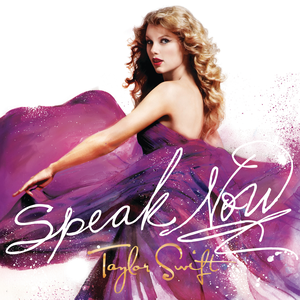
Speak Now is the third studio album by the American singer-songwriter Taylor Swift, released on October 25, 2010, by Big Machine Records. Swift wrote the album entirely herself within two years while touring to promote her second studio album, Fearless (2008), to reflect on her transition from adolescence to adulthood.

The languages of the Caribbean reflect the region's diverse history and culture. There are six official languages spoken in the Caribbean:
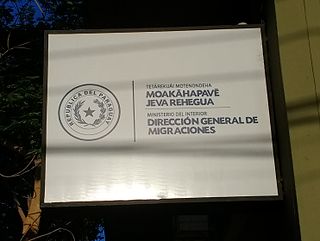
The Republic of Paraguay is a mostly bilingual country, as the majority of the population uses Spanish and Guaraní. The Constitution of Paraguay of 1992 declares it as a multicultural and bilingual country, establishing Spanish and Guaraní as official languages. Spanish, an Indo-European language of the Romance branch, is understood by about 90% of the population as a first or second language. Guaraní, an indigenous language of the Tupian family, is understood by 77%, and its use is regulated by the Academy of the Guaraní Language.

































